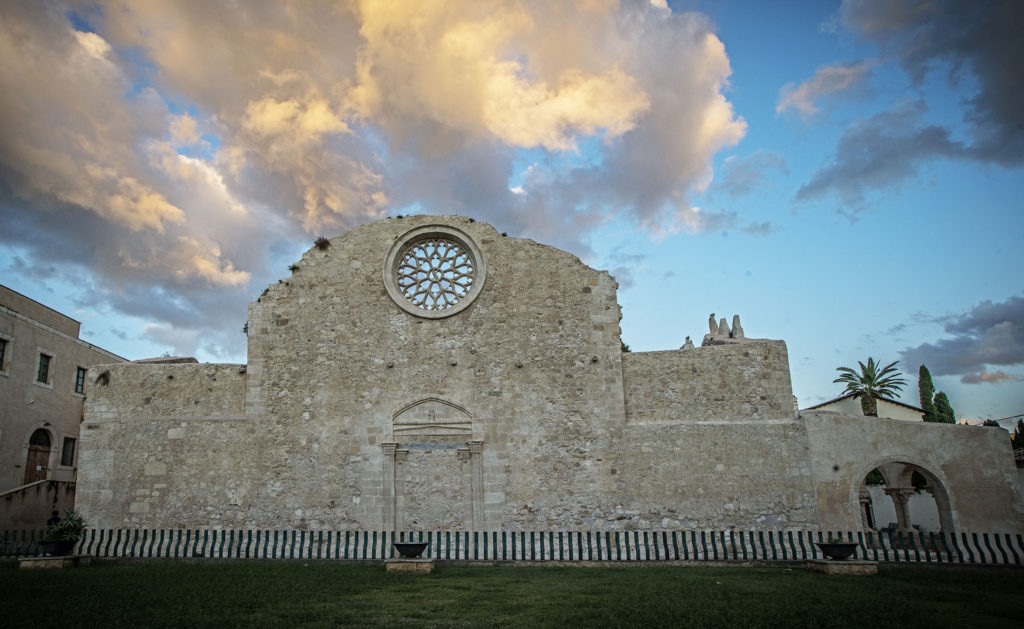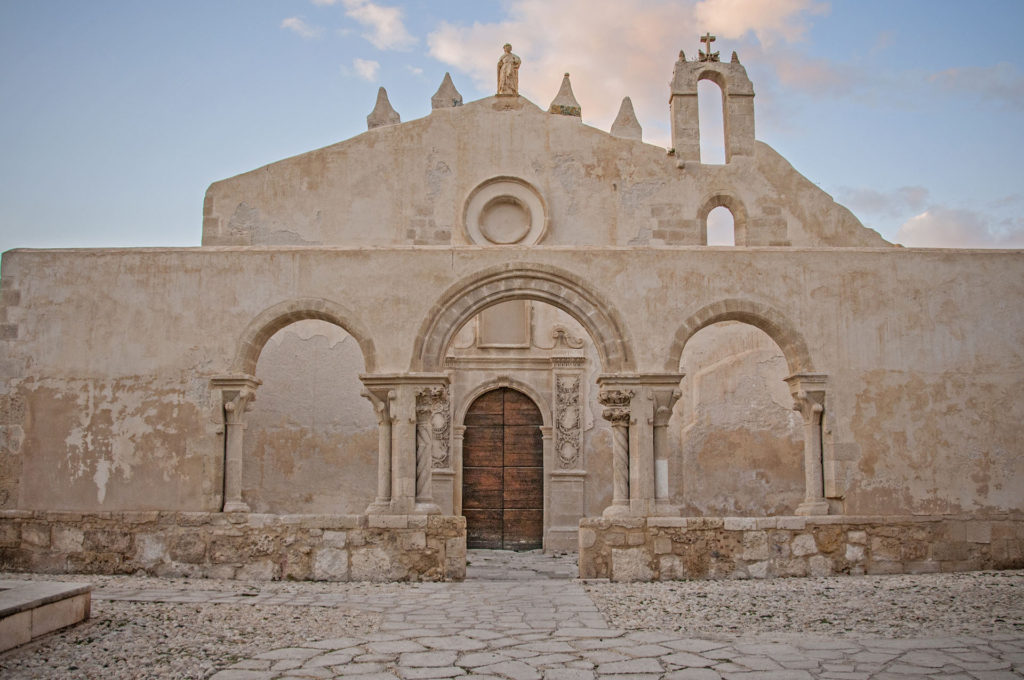Above the underground environment of the Catacombs stands the church of San Giovanni, considered the largest sacred monument built in the early Middle Ages together with the Byzantine basilicas in Ravenna. With its beautiful white stone rose window and elegant Gothic-Catalan portico, this place represents a veritable “architectural narrative”: an authentic example of different techniques and materials and still retains traces of the evocative charm that drove travellers on the
Grand Tour
to visit it.
The Church was built in the 6th century, in the Byzantine era, on top of the pre-existing catacombs, and was built exactly above the crypt of San Marciano, so that the Saint’s tomb was in line with the altar, placed in the centre of the nave and enclosed by a balustrade. Inside it was composed of a large raised presbytery and three large naves marked by twelve Doric columns (a reference to the apostles), of which only a few columns and part of the apse remain today.
After the devastation suffered in Islamic times, the building was remodelled by rebuilding the perimeter walls and reducing the number of columns, while in 1300 a second façade was built and the layout of the church was modified.
The place of worship was occupied by the Carmelites, until the collapse of the vault in 1693 due to the earthquake. In the following centuries the basilica was damaged and modified again and again, until it took on its current shape.
Today you can still see the perimeter walls and the two external façades.
The ancient Norman façade is located in the left wall of the church and is characterised by a portal flanked by two stone pillars supporting a cusped arch, topped with a circular rose window.
 The south façade, destroyed by the earthquake and rebuilt in the 18th century, is characterised by a portico that precedes an arched entrance portal framed by two pillars decorated with splendid bas-reliefs.
The south façade, destroyed by the earthquake and rebuilt in the 18th century, is characterised by a portico that precedes an arched entrance portal framed by two pillars decorated with splendid bas-reliefs.
